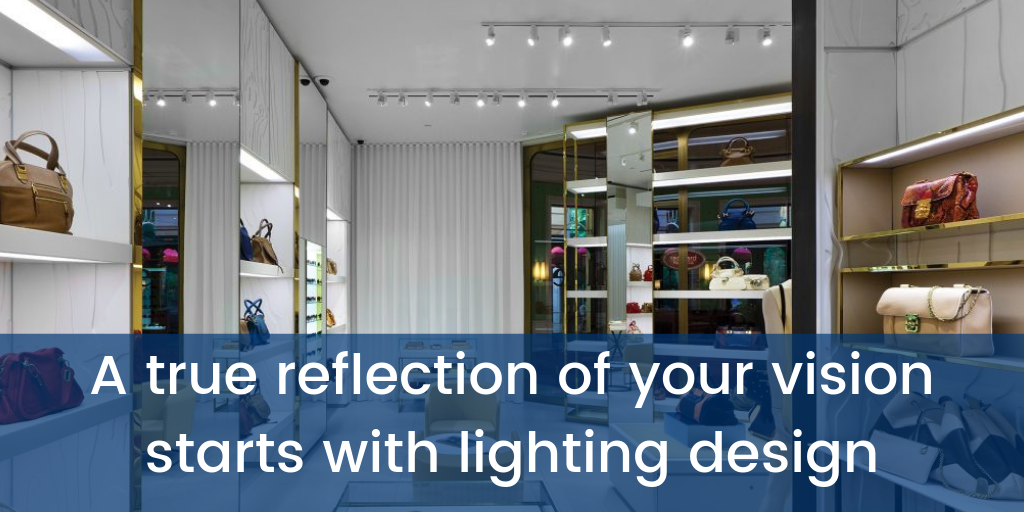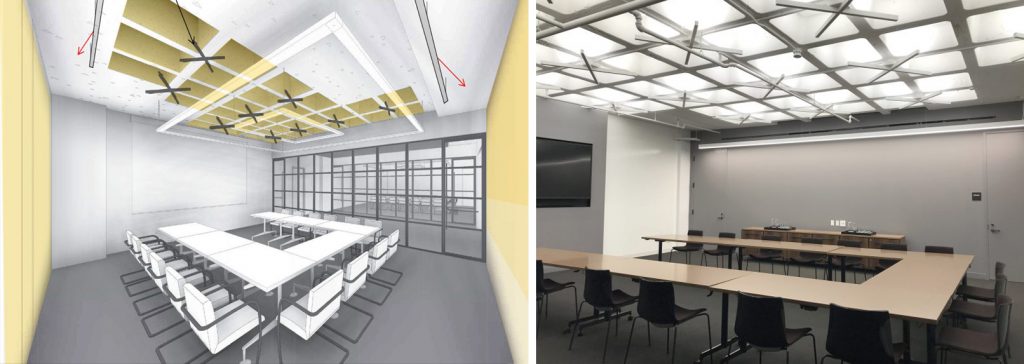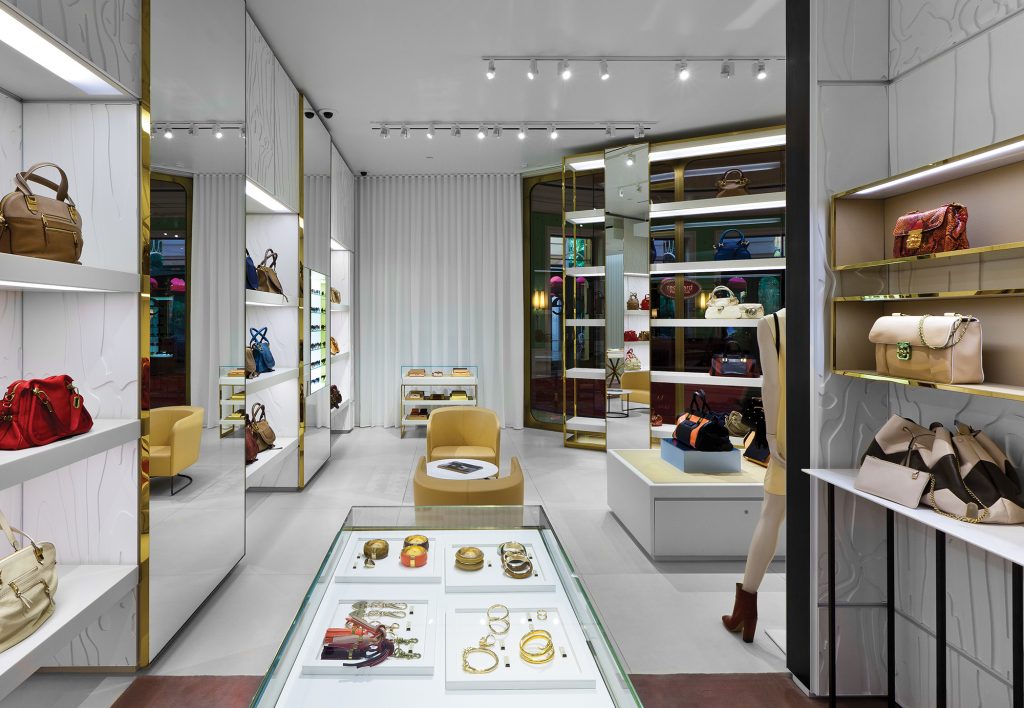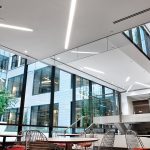A true reflection of your vision starts with lighting design
Lighting is so often treated as a “bolt-on” component of building design with architects or building owners coming to a lighting consultant after the blue prints are all but printed. This approach assumes lighting is just a matter of picking out fixtures. However, lighting designers know lighting is so much more.
Lighting in a space has two jobs: creating the feel or atmosphere of the room and optimizing the functionality of the space.
Good lighting design accomplishes both of these tasks. When the lighting for a space is done right, the design is mostly invisible. However, people unconsciously react to the lighting—people follow the path the lighting directs them on without even realizing they are doing it. They feel more comfortable. They are more productive in their work. Merchandise flies off shelves faster.
The way to achieve these results is to flip the common design script where lighting is an after-thought. The ideal way to design a space is to start with the lighting and then build the plan around that.

The right light makes any design shine
Spanish architect Elisa Valero Ramos famously referred to light as “the intangible material” in architecture. It’s that intangible nature of light that makes it so easy to overlook. Light can transform a beautiful room into a harsh and uninviting space or a spartan room into a warm and pleasing place.
 In this project by Lam Partners, the lighting design created a unique meeting space (See the full case study here). Photo © Lam Partners / Shannon Aubourg.
In this project by Lam Partners, the lighting design created a unique meeting space (See the full case study here). Photo © Lam Partners / Shannon Aubourg.
Lighting should be the foundation of any design. Incorporating lighting into the beginning of the design process ensures the final product delivers on the architect’s vision and the building owner’s needs.
Use lighting to create the narrative for the room
Our eyes are always drawn to what is brightest. It’s why the spotlight goes on the star of scene in a play. It’s why yellow is the color we see fastest. Lighting creates the narrative structure for the room with a visual hierarchy. Lighting clearly directs our gaze and our brains interpret what is illuminated to be more important than what isn’t.
Seminal research on lighting spaces (Flynn, Spencer, Martyniuk & Hendrick; Taylor & Sucov) has found that when people want to relax, they will situate themselves in a dimly lit area of the room, but face towards the brighter area. Additionally, when faced with a barrier to enter a room, people will usually move to the right to go around it—unless the left side is brighter. In that case, people will follow the light.
Lighting creates focal points for the space and directs wayfinding—directly and on an unconscious level.
Lighting sets the mood for the space
More than any other architectural element, lighting determines the atmosphere for the room. This is why it’s crucial to design the lighting around the intended purpose of the space.
Is this a place where work gets done? Is this a place to play? Is this a sacred space? Is this a place to relax? Is this home?

More than any other element of the architecture, the lighting in a space answers these questions instantly for people the moment they enter the room. Once the mood for the room is set, people naturally follow it. That’s why poor workplace lighting—whether it’s glary, too dim, or otherwise unsuited to the task at hand—is cited in study after study as a powerful depressant on performance.
Lighting connects us to other people
Besides being an intangible layer of the architecture, lighting is also an abstract glue that connects people. Research has found when people are in a bright environment, they are more likely to conform their actions to a group standard instead of doing what they really want to do. Likewise, in darker rooms, people felt less connected to others and thus assign less value to what they think.
The research found people in dimmer areas act truer to their own desires—like choosing a sundae over a salad at a restaurant. The lower light levels create a feeling of psychological distance between people, making them feel less connected to each other and freer to do what they really want.
Good lighting isn’t usually seen. It’s felt subconsciously, but when it does its job well, the lighting design isn’t noticed. Instead, people notice they feel good and retailers notice their sales are up. Good lighting can rescue a poor design while bad lighting can sink a beautiful design.
Lighting is one of the most powerful influencers of behavior and emotional state. Treating it as anything other than an equal factor in the design process sets architecture up to fail.

